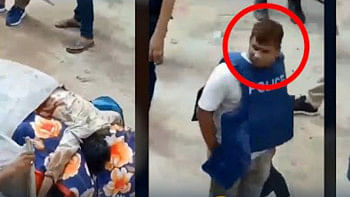The dilemma over ban on gathering
Preparations for the observance of the strike called for February 21 went on all day on February 20. A meeting of the All Party State Language Committee of Action was held at the Awami Muslim League office on Nawabpur Road. The focal point of the discussions there was whether Section 144 should be broken and the strike should go ahead. Badruddin Umar notes that a majority of those present were opposed to a violation of Section 144 and only a handful, among whom was Oli Ahad, convenor of the Dhaka University State Language Committee, advocated a violation of the restrictions imposed by the authorities.
Earlier in the afternoon, the East Bengal Legislative Assembly convened in session. Of the 123 members of the assembly, 80 were present in the House. At the beginning of the session, Khairat Hossain asked for a discussion on the ban imposed on the Pakistan Observer. His statement was opposed by Chief Minister Nurul Amin, who nevertheless went on to inform the legislators that the step had been necessitated in the public interest and if the ban had not been clamped, disorder would be the result. Khairat Hossain's motion was not allowed by the speaker. Consequently, no discussion took place.
On the same day, orders for an imposition of Section 144 of the Criminal Procedure Code were issued by the District Magistrate of Dhaka, SH Qureshi. A government press note made it clear that the restrictions would stay in force for thirty days. Meanwhile, government officials became busy trying to justify Section 144. Aziz Ahmed, chief secretary to the government of East Pakistan, pointed out that intelligence reports had warned of plans by the protestors to storm the assembly building on February 21. As a matter of fact, though, while the protestors did plan lay siege to the assembly building, they did not have any plans of entering it and causing chaos.
At a later stage, after the tragedy, the chief minister noted that the decision of clamping Section 144 had been made at the level of officials and that he had had no knowledge of it. It was a pointer to how ill-served politicians were by bureaucrats. Aziz Ahmed ran the administration with no thought to the authority the chief minister was empowered to exercise.

 For all latest news, follow The Daily Star's Google News channel.
For all latest news, follow The Daily Star's Google News channel. 




Comments